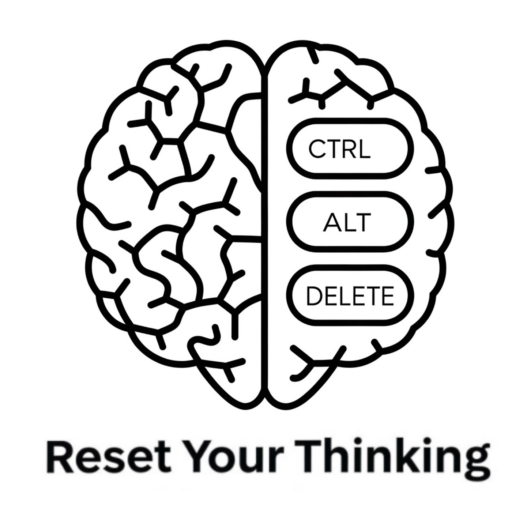This briefing document summarizes the key themes and important ideas presented in Seth Godin’s “Practice.” The book, structured as a series of short, insightful pieces, encourages readers to embrace a consistent and intentional creative practice, emphasizing generosity, self-trust, and the act of “shipping” (releasing) their work. Godin dismantles common creative blocks and myths, offering practical advice and a mindset shift towards viewing creative work as a continuous practice rather than a pursuit of elusive genius or guaranteed outcomes.
Main Themes and Important Ideas:
1. The Importance of Practice and Consistency:
- Godin stresses that consistent practice is the cornerstone of creative work and identity. “If you do something creative each day, you’re now a creative person. Not a blocked person, not a striving person, not an untalented person. A creative person. Because creative people create.”
- He debunks the myth of the muse as a prerequisite for creation. “We don’t write because we feel like it. We feel like it because we write.” The act of working itself generates inspiration and flow. “Flow Is a Symptom.”
- Establishing a daily practice, even a small one, helps solidify one’s identity as a creator. “Establish your identity by doing your work.”
- The practice is “relentless” but ultimately rewarding.
2. Generosity as a Core Principle:
- Creative work, at its heart, should be generous, focused on solving problems and making things better for others. “When you choose to produce creative work, you’re solving a problem. Not just for you, but for those who will encounter what you’ve made.”
- Selling is reframed as a generous act of bringing value to others. “Selling is simply a dance with possibility and empathy. It requires you to see the audience you’ve chosen to serve, then to bring them what they need.”
- Hoarding ideas and one’s voice is “toxic,” hindering connection and impact. “Hoarding your voice is based on the false assumption that you need to conserve your insight and generosity or else you’ll run out of these qualities.”
- Saying “no” effectively stems from a commitment to one’s own generous vision. “Our commitment to the practice is the source of that yes.”
3. Trusting Yourself and Embracing Imperfection:
- Overcoming “Imposter Syndrome” is crucial. “At least when I’m doing my best work.” Godin suggests that this feeling is often a sign of pushing boundaries.
- The only way to begin is “Start Where You Are.” Focusing on the process rather than the outcome is key. “Effective goals aren’t based on the end result: they are commitments to the process.”
- Reassurance is “futile.” The focus should be on the work itself and the value it provides to others, not external validation.
- Confidence is “relative” and grows through the act of practicing and shipping.
4. The Act of “Shipping” and Overcoming Resistance:
- “Shipping, because it doesn’t count if you don’t share it.” Releasing work into the world is essential for impact and learning.
- Resistance is “real” and manifests in various forms, including “writer’s block.” Godin argues that “Writer’s block is a myth. Writer’s block is a choice.” It often stems from the “Search for Certainty.”
- Perfectionism is a hindrance. “Polish Is Overrated.” The focus should be on putting the work out there and learning from the feedback.
- Fear of failure is natural, but “Proving to Yourself that Creation Isn’t Fatal” is part of the practice.
5. Intentionality and Defining Your Audience:
- “Our Intent Matters.” Creative work should be purposeful and directed. “Intentional Action Is Design with Purpose.”
- It’s crucial to define “Who’s It for?” and to be “More and More Specific, Please.” Trying to reach everyone leads to diluted and ineffective work. “You Can’t Reach Everyone.”
- Understanding the audience allows for empathy and the creation of truly valuable work. “How Deep Does Your Empathy Run?”
- Every element of a project should have a purpose. “What is this element of our project for? This is intentional action.”
6. Embracing Constraints and Genre:
- “Constraints Create the Possibility of Art.” Limitations can foster creativity and focus.
- Understanding and working within a “Genre, not Generic” framework helps the audience understand and connect with the work. “The people you bring your work to want to know what it rhymes with, what category it fits in, what they’re supposed to compare it to.”
- Transformation often begins by mastering a genre before innovating. “Transformation Begins with Genre.”
7. Assertions and Taking a Stand:
- “Make Assertions.” Creative work involves putting forth a point of view and a promise to try and make things better. “An Assertion Is Not a Guarantee” but “An Assertion Is Generous.”
- “Egomania versus Ego Strength”: While narcissism is detrimental, a healthy ego is necessary to have the courage to make assertions and share one’s work.
- Assertions are not necessarily answers but rather invitations to engage with new ideas.
8. The Role of Community and Learning:
- “Look for the Cohort.” Surrounding oneself with supportive peers encourages practice and growth.
- “Earn Your Skills.” Improvement comes through dedicated effort and commitment to the craft. “The Truth about Getting Better.”
- “Where Does Good Taste Come from?” It develops from domain knowledge, experience, and understanding the audience. “Good taste is the ability to know what your audience or clients are going to want before they do.”
- Learning from what you ship is a vital part of the practice.
Key Quotes:
- “Artists make change happen. Artists are humans who do generous work that might not work. You’re an artist as soon as you announce you are. If you care enough.”
- “We become what we do.”
- “The only choice we have is to begin. And the only place to begin is where we are. Simply begin. But begin.”
- “Drew’s not a genius. He just has more paper than us.” (Regarding the discard pile)
- “Do the work, become the artist. Instead of planning, simply become.”
- “Everyone has a voice in their head, and every one of those voices is different. Our experiences and dreams and fears are unique, and we shape the discourse by allowing those ideas to be shared.”
- “Writer Justine Musk reminds us that in order to say no with consistency and generosity, we need to have something to say ‘yes’ to. Our commitment to the practice is the source of that yes.”
- “We don’t ship the work because we’re creative. We’re creative because we ship the work.”
- “The masses aren’t the point. They might be a welcome side effect of your work, but to please the masses, you must pander to average.”
- “Your audience doesn’t want your authentic voice. They want your consistent voice.”
- “Writer’s block is a myth. Writer’s block is a choice.”
- “Forward motion is the only sort of motion that we’re interested in. Take the situation you were handed, the lines that were uttered, the tension in the room, and then act as if ‘yes, and . . .'”
- “We don’t write because we feel like it. We feel like it because we write.”
- “If you want to complain that you don’t have any good ideas, please show me all your bad ideas first.”
- “An assertion is a promise. A promise that you’ll try. A promise that you’ll ship. And a promise that if you fail, you’ll let us know why.”
- “Ultimately, the goal is to become the best in the world at being you. To bring useful idiosyncrasy to the people you seek to change, and to earn a reputation for what you do and how you do it.”
- “Constraints Create the Possibility of Art.”
- “Better is possible. But not if we continue to settle, continue to hide, and continue to scurry along the same paths.”
Conclusion:
“Practice” by Seth Godin offers a compelling and actionable framework for anyone seeking to engage more deeply and effectively in creative work. By emphasizing consistent effort, generosity, self-trust, and the courage to share one’s creations, Godin encourages readers to move beyond the pursuit of fleeting inspiration and embrace the power of a dedicated practice in service of their unique identity and the needs of their chosen audience. The book serves as a potent reminder that the act of creating is not reserved for a select few but is accessible to anyone willing to commit to the journey.
RYT Podcast is a passion product of Tyler Smith, an EOS® Implementer (more at IssueSolving.com). All Podcasts are derivative works created by AI from publicly available sources. Copyright 2025 All Rights Reserved.

